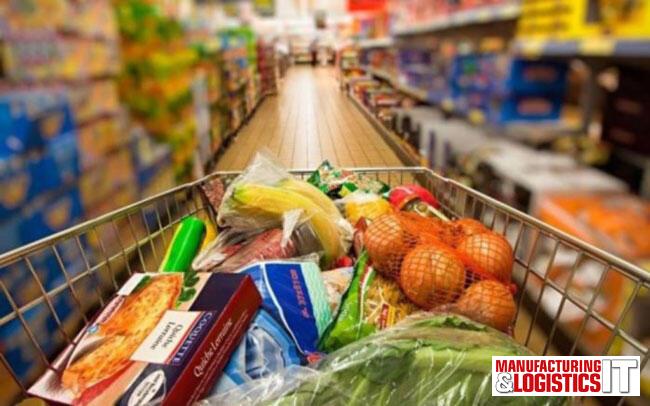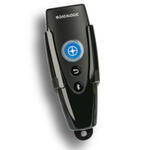The evolving role of mobile computing in food and convenience retailing.....an executive brief by Datalogic.
Every day the food and grocery industry feeds nearly 64 million people, living in over 27 million households across the UK. A feat that can only be achieved through the combined efforts of many hundreds of thousands of people working across different parts of the grocery supply chain.

According to industry research and training charity IGD, food retail currently accounts for 50% of all retail sales in the UK. It also estimates that the market will be worth £213 billion by 2022, a 15% increase on the current value of the market at the time of writing this article.
It's a huge opportunity for food retailers but in such a fiercely competitive industry, IGD warns that UK food and grocery businesses must engage with shoppers on a much more emotional level than they currently do to deliver growth.
In this paper, we look at the latest mobile computing technology and discuss the potential role it can play in helping retailers to increase customer engagement while continuing to improve productivity out on the shop floor.
Connected colleagues
 The role of technology in food retail is constantly evolving and gone are the days when the only front of house technology was at the point of sale. There are now many ways that technology can be utilised to enhance engagement with customers and efficiently carry out daily administration tasks.
The role of technology in food retail is constantly evolving and gone are the days when the only front of house technology was at the point of sale. There are now many ways that technology can be utilised to enhance engagement with customers and efficiently carry out daily administration tasks.
Customers are changing too. In the new era of the smartphone, shoppers armed with internet enabled devices often have access to more information about products than the staff working on the shop floor. If customers are now so well connected, then shouldn't staff be as well?
Enabling staff with digital technologies and ensuring they have the skills and training to use this technology effectively must be a priority for retailers who are serious about customer service in the digital era. There are now several devices emerging in the rugged mobile device market that bear many similarities with consumer mobile phones and tablets. These familiarities mainly manifest in the way that users interact with the devices.
Providing staff with devices that have more familiar and user friendly interfaces can pay huge dividends. The most immediate benefit is that by deploying devices with more intuitive user interfaces, retailers can reduce the learning curve for users. If the use of these devices becomes more intuitive then in turn, the processes and tasks they are being used for are more likely to be executed correctly and productivity is increased. There is also evidence to suggest that devices that more closely mirror a user's own smartphone are more likely to be well cared for while in use.
Fit for purpose and multi-purpose
 Despite the ability to operate more like their consumer grade cousins, these devices still possess many of the enterprise class features that retailers have come to depend on from their mobile computing technology including; high definition toughened glass touchscreens, 2D imaging capability, rugged drop specifications, extended battery life and more. By incorporating these enterprise features you can ensure that your mobile technology is not only fit for purpose but that it is multi-purpose.
Despite the ability to operate more like their consumer grade cousins, these devices still possess many of the enterprise class features that retailers have come to depend on from their mobile computing technology including; high definition toughened glass touchscreens, 2D imaging capability, rugged drop specifications, extended battery life and more. By incorporating these enterprise features you can ensure that your mobile technology is not only fit for purpose but that it is multi-purpose.
How many times do colleagues touch the shelf in a typical day? Price checking, picking, gap analysis, visual merchandising and fronting are just a few of the most common tasks that our customers tell
us they need to complete daily. However, completing these tasks while the store is open isn't always easy. Staff need to be armed and ready to deal with customer queries one minute before switching back to their task in the next.
Empowering staff with a single device in the aisles that can deal with multiple tasks is a must. By intelligently combining software processes on an easy to use interface this is now possible.
Next generation self-shopping
In some instances, it's even possible to arm staff and customers with the same devices. Our experiences tell us that 80% of the time self-shopping devices are not fully utilised because the number of devices are often based on peak trading times. So why not enable staff to take advantage of these devices as well? In addition to improving productivity, by sharing your device pool you can reduce the number of physical devices in store, reduce downtime and ultimately reduce costs.
 Increasingly, self-shopping devices are being designed with this multi-user approach in mind. Multiple and interchangeable form factors including handheld and pistol grip devices are available, as are wireless charging units that reduce maintenance and improve battery performance. There is also a facility with some devices to despatch only fully charged units from a charging cradle, ensuring that customer shopping or operational tasks can be completed successfully, without having to go back and forth to swap devices.
Increasingly, self-shopping devices are being designed with this multi-user approach in mind. Multiple and interchangeable form factors including handheld and pistol grip devices are available, as are wireless charging units that reduce maintenance and improve battery performance. There is also a facility with some devices to despatch only fully charged units from a charging cradle, ensuring that customer shopping or operational tasks can be completed successfully, without having to go back and forth to swap devices.
Large touchscreens available on the majority of devices are also advantageous for both customer and colleague. Product information can be clearly displayed on the device and there is also the potential to notify customers about promotions to increase average transaction via push notifications. These devices can also be utilised to pick orders for home delivery or click and collect.
By empowering staff and customers with the same devices retailers can further enhance engagement between the two user groups. Again, by having intuitive devices staff will be more able to assist customers that use the devices for self-shopping and this has the possibility to improve uptake of self-shopping itself.
Of course, for all of this to work in the real world, it is vital to have the right software operating on the devices that are chosen. Some devices are available with Windows and Android operating system options giving retailers more flexibility over the strategic direction they wish to take with regards to application development.
Summary
Finding the right balance of mobile computing technology to connect colleagues so that they can be more agile, engage better with customers and improve productivity is a challenge that food retailers are going to have to take seriously in the coming months and years.
There is now a new breed of rugged devices that share similarities with the smartphones that many of us know how use by intuition alone, reducing the learning curve and potential errors. However, these devices still offer retailers the same enterprise grade features that they require to carry out daily tasks and lower the total cost of ownership compared with consumer grade devices.
Retailers might also wish to consider the pool of devices that they use across their staff and customer base. It may be possible to utilise one device for both user groups reducing the number of physical devices in store, reducing downtime and ultimately reducing costs.
Contact Datalogic for further information.
Tel: +44(0) 1582 790020
Email: info.uk@datalogic.com
www.datalogic.com
Featured products:
Joya Touch
 Multi-purpose device: handheld or pistol-grip options
Multi-purpose device: handheld or pistol-grip options- Android OS available
- Wireless charging with 'Boost Mode' and versatile locking 3 bay cradle
- Datalogic SoftSpot technology for innovative triggering through touch display
- 4.3 inch FWVGA and QVGA display
- Vibration feature to inform users
- 2D imaging technology
- Datalogic's patented 'Green Spot' technology for visual good-read feedback
DL-Axist
 5 inch HD multi-touch screen with Gorilla Glass 3
5 inch HD multi-touch screen with Gorilla Glass 3- 802.11 a/b/g/n with MIMO technology and Cisco CCX v4 certified
- 3G/4G cellular for voice and data communication
- Bluetooth® wireless technology v4.0 with BLE for beacons
- NFC for configuration and pairing
- Enterprise Class Assisted GPS for location-based applications
- IP67 rating and 1.8 m / 6.0 ft drop resistance
RIDA – DBT6400
 Image capture capability
Image capture capability- Outstanding reading performance on 1D/2D printed codes or on mobile phone screens
- Bluetooth wireless technology
- Compatible with Android, Apple iOS and Windows Mobile devices
- Batch Mode capability: +2,000 linear codes stored in memory

Add a Comment
No messages on this article yet